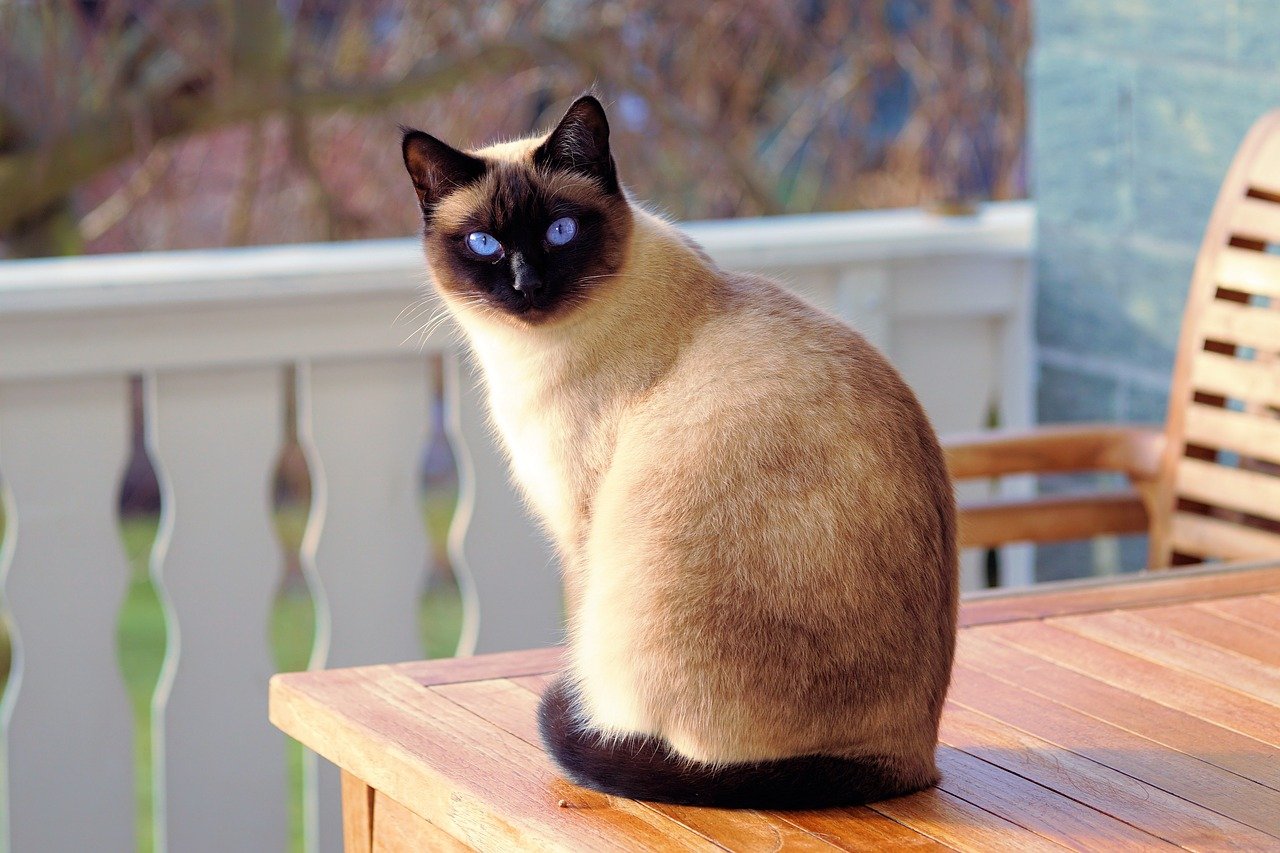
If you have a Siamese cat at home and wondering if your cat can have eye problems or not then continue reading this article. Yes, Siamese cats have eye problems relating to vision. Most cat owners, on the other hand, are likely unaware of the severity of the eye problems. One of the most distinguishing characteristics of the Siamese cat is its blue eyes. Siamese cats, on the other hand, lack eye pigment due to a recessive albinism gene. The albinism gene in Siamese cats can damage their vision in some situations. Siamese cats are also vulnerable to eye diseases, some of which might affect their vision. In Siamese cats, Progressive Retinal Atrophy (PRA) is a prevalent eye disease. There is no therapy or cure for it, and it results in utter blindness.
The breed is prone to a variety of health problems, including progressive retinal atrophy, glaucoma, convergent strabismus, and nystagmus in the eyes. While convergent strabismus and nystagmus are harmless, Siamese can lose their vision due to progressive retinal atrophy and glaucoma.
According to Prestige Animal Hospital, progressive retinal atrophy is an inherited illness in which a Siamese’s eyes are genetically programmed to lose eyesight over time. The majority of infected cats will begin to display symptoms between the ages of 18 months and two years. Night blindness is usually the first symptom of progressive retinal atrophy in cats. In most cases, the illness worsens over two to four years and leads to total blindness. For this eye disease, there are no viable treatments or cures. Progressive retinal atrophy is a genetically recessive disease, which means that an affected cat carries two copies of the gene, one from each parent. A cat who inherits only one copy of the gene is considered a carrier and is unaffected by the disease. Before potential parents are used for breeding, a genetic test can be conducted to identify if they are carriers.
Feline glaucoma is a disorder in which the liquid, the watery component of the eye found directly behind the lens, cannot drain adequately, according to Cornell University College of Veterinary Medicine. The optic nerve, which connects the eye to the brain, is put under strain as this fluid builds up. The pressure damages nerves, resulting in vision loss. Glaucoma can cause partial or total blindness in cats if not treated. Because the symptoms of feline glaucoma are often modest, it can be difficult for cat owners to notice. Over time, you may notice one or both of your cat’s eyes become cloudier or larger. One of your cat’s eyes may appear to be larger than the other. The pupil of your cat may appear dilated and unresponsive to light. Because the disease usually takes months to develop, cat owners may not notice any behavioral changes. Despite significant eye discomfort, most cats will be able to carry on with their daily activities. Sadly, there is no cure for this disease. However, eye drops can be prescribed to help reduce eye pressure and inflammation to help reduce the discomfort associated with the illness.
Convergent strabismus is the medical word for crossed eyes. While convergent strabismus is considered a congenital abnormality in some cat breeds, it is not uncommon in Siamese cats. Cats can develop convergent strabismus at any age. According to PetPlace, when a cat is born cross-eyed, it could be due to problems in the development of the eye muscles, the eye, or the brain. When a cat develops convergent strabismus as an adult, it could be a sign of a serious eye condition. If you observe any changes in your cat’s eyes, take your cat to the clinic.
Siamese might be born with nystagmus, a congenital eye disorder. Nystagmus is a condition in which a cat’s eyes rapidly move from side to side. There are two forms of nystagmus, according to AnimalPath, jerk nystagmus, and pendular nystagmus. The eye moves slowly from one side to the other in one direction and quickly from side to side in the other way in jerk nystagmus. The eyes move from side to side at the same rate in pendular nystagmus.
If you see a mass on your cat’s eyelid or symptoms like swelling, excessive tearing, redness, or discharge, contact your veterinarian immediately. Eyelid tumors in cats are frequently cancerous, and catching them early can improve the prognosis. Your veterinarian can advise you on the best treatment which may include surgical removal of the mass, particularly if it is cancerous.
No, you shouldn’t be concerned if your Siamese cat has crossed eyes because it won’t damage her or harm her quality of life.
Siamese cats are known for their slim, stunning look, as well as their bright blue eyes. Due to temperature-sensitive albinism, all Siamese cats have this eye color. An unusual symptom in your pet could be a small or temporary problem, but it could also indicate a major illness or disease. When it comes to caring for your cat, knowing when to seek veterinarian treatment and how urgently you should get it is critical. Take your cat to your veterinarian if you observe any changes in his or her eyes, such as cloudiness, discharge, or weepiness. Even little changes in your cat’s look can suggest the presence of a significant problem.